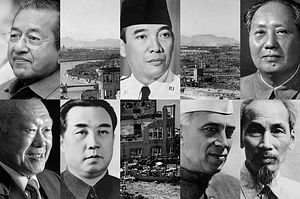August 15, 1945 – the day Japan initially announced its surrender to the allies; the day that signaled the final end of World War Two. For the 400 million people of the Chinese Republic, that day also marked the end of eight years of all-out war, beginning with the Japanese attack on northern China in July 1937. Within six months most of China, including the capital Nanjing, had been conquered. By early 1942, following Pearl Harbor, the vast majority of East and Southeast Asia (excepting a few neutral outposts, such as Macao) had come under Japanese control. Tokyo’s hegemonistic vision of a Greater East Asia Co-Prosperity Sphere stretched from the Pacific Islands to Burma. Japanese forces were poised to invade British-controlled India to the west, Soviet-controlled Siberia to the north, and launch bombing raids against Australia’s Northern Territories.
Years later, the end of World War Two in Asia was greeted by celebration, the withdrawal of Japanese occupying forces, and the collapse of their proxy administrations, whether imported from Tokyo or collaborationist. However, Asia was not to simply revert back to the prewar social order and political hierarchies. With the end of the Japanese bid for total regional power came new and substantial challenges to the prewar colonial order, from resistance movements in the Far East possessions of the British, Dutch and French Empires, and the ending of the Treaty Port system in China, to the rise of new ideologies, in the form of communism and Marxist-Leninist political parties, to more overtly indigenous liberation movements. None of these processes occurred with universal agreement, many were violent and became extremely bloody, the after-shocks of the war rumbled on for generations and do so into our own era. Many of the resistance movements pre-dated the war, though many had also been subtly encouraged by the Japanese in their quest to oust the European colonizers.
The post-1945 regional regime changes have ramifications for today’s Asian geopolitical landscapes. These are the “lingering ghosts” of World War Two across Asia. Spanning the continent from India to the Kuril Islands, China down to Vietnam, new leaders, political forces and ideologies emerged and competed for space in the new postwar political order. This great sorting out was not just to affect Asians, but would reverberate as far away as London, Paris, The Hague, and Washington.
Colonialism and Communism
In the dying months of 1945 much of Asia turned its face away from its former colonial masters.

































